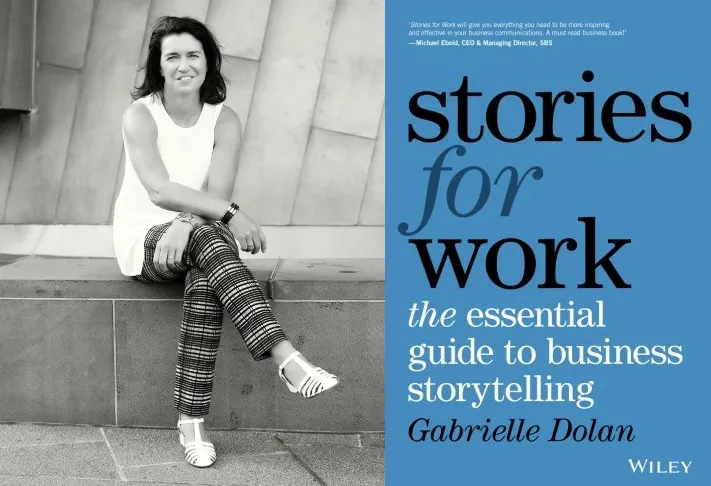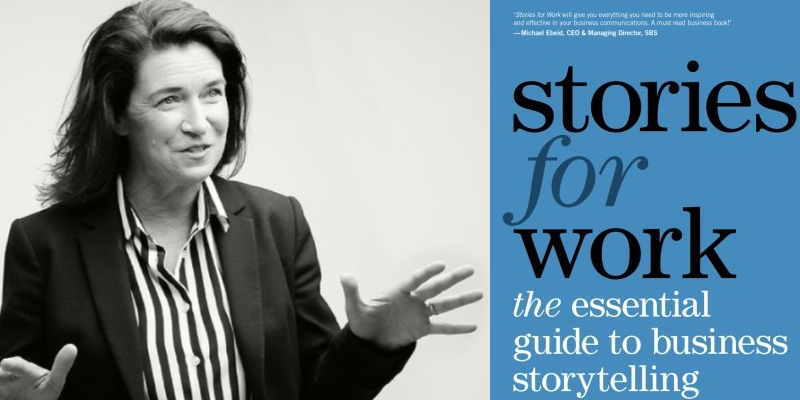Why entrepreneurs need sharp storytelling skills: Gabrielle Dolan, author, ‘Stories for Work’
Founder stories can connect with investors and stakeholders, but passion should not come in the way of the story. This bestselling author explains how.
Gabrielle Dolan is the author of Stories for Work: The Essential Guide to Business Storytelling (see my book review here). Her other books include Hooked: How Leaders Connect, Engage and Inspire with Storytelling; Ignite: Real Leadership, Real Talk, Real Results; and Storytelling for Job Interviews. Her website offers a free 7-day storytelling starter kit.
Gabrielle’s latest book defines four types of stories: triumph, transition, tension and tragedy. She shows how they can be used in business stories across eight categories, with actual stories from companies such as Accenture, Bank of Melbourne, National Australia Bank, DibbsBarker, Putti, AECOM, Lyric, and ME Bank.

Gabrielle joins us in this chat on her current work in leadership, the importance of storytelling for entrepreneurs, stories in the digital world, and her new book.
Edited excerpts of the interview:
YourStory: What is your current field of research in storytelling?
Gabrielle Dolan: As storytelling becomes more popular in business, I am finding it exciting and challenging working with clients on how they implement storytelling across the entire organisation.
This involves moving beyond just training leaders and sales people to how we make storytelling part of their culture and the way they communicate. So not only skilling every one (which is critical), but how they can find and share stories both internally and externally.
YS: What are the typical challenges entrepreneurs face as they scale up their company? How can storytelling help in the different stages of the journey?
GD: Two of the biggest issues entrepreneurs face as they scale up is either securing funding and/or bringing their employees and stakeholders along on the journey. Storytelling can help with both of those challenges.
I see entrepreneurs and startups full of passion, but sometimes that passion can hinder the way they share their stories. As they scale up, they need to keep adding to the stories they share, and there is a real skill in doing that.
YS: How should innovators strike that delicate balance between ‘Stick to your vision’ and ‘Adapt to a changed world’? How should their story reflect the ups and downs of the journey?
GD: There absolutely needs to be a balance between staying true to your vision but adapting to a changing world. If you don’t adapt to the changes in technology, market, or even customers’ expectations, you will most likely not achieve your vision.
The most interesting stories people can share are of their ups and downs. Stories about the struggles and challenges you have had to overcome can become powerful ways to connect people to you and your brand.
YS: How big a role does academics play in storytelling? Can storytelling really be formally taught, eg. in schools and colleges?
GD: I don’t consider myself an academic as I have spent my entire career in business. I do know however that storytelling can absolutely be taught and learnt. It is increasingly being taught in executive education programs at universities.
I also believe that the sooner this is taught the better, because it is a life skill that will help anyone regardless of their career. They teach kids how to use PowerPoint in school, why not storytelling?
YS: How about storytelling in government and non-profit organisations?
GD: If your job involves communication, influence and leadership, you would benefit from learning the art of storytelling. So yes, it absolutely has a place in government and non-profit organisations.
Non-profits normally rely on government grants or donations. Either way, they need to engage people in their vision and purpose and to influence them for support.
YS: Who are some of the storytellers you admire the most today, and why?
GD: You probably wouldn’t know any of them because they are the everyday leaders I meet in business, who after my training have the courage to step into vulnerability and share their stories, even when they feel uncomfortable doing it. I love seeing them shine and make a difference, and I admire them for that.
YS: What are the ways in which digital media is transforming the craft of storytelling – for the better and the worse?
GD: Digital media is making it easier to record your stories. It is so easy to pull out your smartphone and record a story. Social media is also making it easier to share these stories. I am seeing an increase in CEOs and small business owners adopting this strategy.
On the flip side, the rise of software where people can produce fake audio and content does mean that it may become harder to differentiate between true stories and fake stories.
YS: How does storytelling culture differ in countries and cultures around the world?
GD: One of the aspects that I stress in my storytelling training is to draw on your day to day experiences as a basis for your stories. The more day to day they are, the more relevant they are across different cultures. We are all human and therefore we are all hardwired to share and listen to stories.
YS: What is it like to make a living as a storytelling coach and consultant? What are the challenges you face, and how do you tackle them?
GD: It is a fabulous way to make a living. I have a very privileged position where people are sharing stories with me that are sometimes very personal and sometimes for the first time.
The challenge is to create an environment where people feel comfortable in sharing stories and helping them see how they can be a powerful way to engage and connect with people. It is a privilege that I do not take for granted.
YS: What new projects or initiatives are you working on now? Where do you see yourself headed in the next 5-10 years?
GD: While I am still passionate about educating people on storytelling, I am also looking at this more broadly and talking more about the need for real communication and authentic leadership – and storytelling is a big part of that.
So is reducing the amount of jargon and acronyms we use, as well as showing vulnerability and having the courage to say it as it is. We need to stop hiding behind words that mean nothing and have the courage to be real.
YS: How was your book received? What were some of the unusual responses and reactions you got?
GD: The book has been tremendously well received. You have to be happy with any book that achieves ‘best seller’ status. Perhaps not unusual responses but certainly humbling responses is the number of people that have told me how much they loved the book.
And more importantly the positive impact it has had on their leadership and communication. The whole purpose of the book was to encourage people to share their own personal stories to communicate their business messages across, and it has certainly done that.
YS: What is your next book going to be about?
GD: My next book has already gone to print and is available for ordering. It’s called Real Communication: How to be you and lead true.
It’s a timely reminder of why authentic leadership and communication are needed now more than ever. The book is packed with tips, stories and insights on how to achieve real communication and engagement with your employees, peers and customers.
YS: What is your parting message to startups and aspiring entrepreneurs in our audience?
GD: There is a big difference between sharing stories with your friends over dinner and sharing stories in business. Invest the time to learn how to do it well, as it will be well worth your investment.
As Steve Jobs once said: ‘The most powerful person in the world is the storyteller.’








![[Startup Bharat] How Malabar Angel Network is boosting North Kerala’s startup ecosystem](https://images.yourstory.com/cs/2/79900dd0d91311e8a16045a90309d734/MANBuilding1574227798889jpg)


